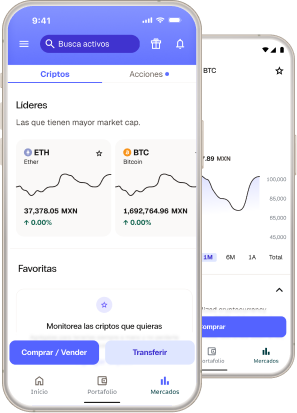In today’s economic world, where millions of factors interact to determine the value of virtually any currency, the Mexican peso in the global market faces constant volatility linked to multiple factors, both internal and external. Over the years, the peso’s relationship with other currencies has been a central topic in the Mexican economy, and the growing participation in the cryptocurrency market is a reflection of this reality. Below, we explore the factors that influence the value of the Mexican peso, its behavior against other international currencies, its impact on cryptocurrency transactions, and how Mexicans can use cryptocurrencies as a hedge against the volatility of the national currency.
What Factors Influence the Value of the Mexican Peso?
The value of the Mexican peso in the global market is not determined by a single factor but depends on a series of economic and political variables, ranging from economic policy and interest rates set by the Bank of Mexico to changes in oil prices.
First, the economic policy of the Mexican government plays a fundamental role in the stability of the Mexican peso. Decisions such as national budgets, public debt levels, and confidence in economic management directly influence international perceptions of the currency. An environment of economic stability that fosters investment and growth tends to strengthen the peso, while policies that generate uncertainty, such as abrupt regulatory changes or excessive public spending, can weaken it.
Related articles: Trump’s Inauguration and Its Impact on Cryptocurrencies
But that is not all, as interest rates, particularly those set by the Bank of Mexico (Banxico), also have a significant impact on the value of the Mexican peso. High interest rates typically attract foreign investments due to the profitability of peso-denominated financial instruments, increasing demand for the Mexican currency. Conversely, a decrease in interest rates can lead investors to seek assets in other currencies, reducing demand for the Mexican peso and potentially causing it to depreciate.
However, not all changes in the value of the Mexican peso are due to institutional decisions: inflation in Mexico is another key factor that cannot be overlooked when listing the factors affecting a currency’s price. Simply put, when domestic prices rise without a corresponding increase in production, the purchasing power of the peso declines. This affects confidence in the currency, especially in a high inflation context that is not adequately controlled. Persistent inflation tends to generate economic uncertainty, which can cause capital flight to more stable currencies, directly affecting the Mexican peso in the market.
A factor that particularly affects the Mexican peso is changes in oil prices. Since Mexico is one of the world’s leading oil producers, its economy is partially linked to international crude oil prices. This means that an increase in oil prices can strengthen the peso due to higher export revenues, improving the country’s trade balance. However, a decline in oil prices usually has the opposite effect, weakening the Mexican peso due to reduced exports and lower income from this industry.
Finally, in addition to these internal factors, the global economy also has a significant impact on the peso’s value. Decisions made by major economies such as the United States and China, fluctuations in international financial markets, and perceptions of global risk also influence it. For example, during periods of global economic uncertainty, investors tend to prefer safer assets such as the U.S. dollar, which can cause the peso to depreciate, especially against this currency.
The Mexican Peso Against the Dollar and Other International Currencies
The relationship of the Mexican peso in the global market is closely linked to the U.S. dollar due to the economic importance of the United States and Mexico’s historic relationship with its northern neighbor. The peso often experiences fluctuations against the dollar due to various factors, including decisions by the U.S. Federal Reserve (Fed), U.S. fiscal policy, and changes in international trade.
To understand this relationship, it is essential to consider that, in the past, the Mexican peso has been characterized by high volatility against the dollar. This is due to the influence of multiple internal and external factors, including changes in monetary policies, trade tensions, and shifts in financial market expectations. In times of uncertainty, the Mexican peso tends to depreciate against the dollar, as investors prefer assets denominated in a more stable currency.
Related article: Mexican Peso & USD Forecast for 2025
Moreover, the Fed’s decisions have a significant impact on the exchange rate between the peso and the dollar. When the Federal Reserve raises interest rates, it attracts capital to the United States, prompting investors to withdraw funds from emerging markets such as Mexico. This often leads to a depreciation of the peso. On the other hand, when the Fed lowers interest rates, investment flows into riskier markets may increase, potentially strengthening the Mexican peso against the dollar.
To fully grasp the position of the Mexican peso against the dollar and other international currencies, it is essential to understand the regional context in which Mexico is situated. The United States-Mexico-Canada Agreement (USMCA) also has significant implications for the peso’s relationship with other currencies. This agreement strengthens trade and economic ties between the three countries, generally improving the peso’s stability. However, changes in trade policies or disputes can create uncertainty and negatively affect the peso’s value against the dollar and other currencies.
Impact of the Mexican Peso on Cryptocurrency Transactions
In recent years, fluctuations in the Mexican peso in the market have led many Mexicans to consider cryptocurrencies as an alternative to protect their purchasing power. The increasing adoption of cryptocurrencies such as Bitcoin, Ethereum, and stablecoins (digital currencies whose value is pegged to more stable assets) has been a direct response to the national currency’s volatility.
Beyond the impact of the peso on cryptocurrencies, it is worth noting that cryptocurrencies are actually seen as a store of value during economic uncertainty. The volatility of the Mexican peso and persistent inflation have led many citizens and businesses to use Bitcoin and other cryptocurrencies for transactions, value storage, or even to diversify their savings. Although cryptocurrencies can also be considered volatile, their decentralized nature makes them less susceptible to risks associated with local monetary policies and inflation.
Related: Cryptocurrency Investments – Diversify Your Portfolio According to Your Profile
In this regard, the Mexican market has seen an increase in the use of cryptocurrencies for daily transactions. From online purchases to remittances, cryptocurrencies offer a way to bypass the peso’s barriers, such as high banking fees and exchange costs. Additionally, due to the accessibility of exchange platforms and the low entry barriers, more and more Mexicans are using cryptocurrencies to preserve their purchasing power and facilitate international transactions.
How to Use Cryptocurrencies to Protect Yourself from Mexican Peso Volatility
Changes in the value of the Mexican peso in the global market can be challenging for both individuals and businesses that depend on its stability. Fortunately, cryptocurrencies offer options that allow Mexicans to hedge against inflation and foreign exchange market fluctuations. Some of the main strategies used by people looking to use cryptocurrencies as a hedge against currency volatility include:
- Exchange Platforms and Accessibility – Access to cryptocurrency exchange platforms such as Bitso has facilitated the use of cryptocurrencies in Mexico. These platforms allow users to buy, sell, and store cryptocurrencies easily, making it simpler to protect against peso volatility.
- Using Bitcoin as a Store of Value – Bitcoin is the most popular cryptocurrency, and due to its limited supply (21 million coins), it is considered a deflationary asset. Although Bitcoin’s price can fluctuate, many Mexicans see it as a way to safeguard their money from inflation and the depreciation of the Mexican peso. Investing in Bitcoin helps prevent savings from losing value due to rising inflation in the country.
- Stablecoins as Protection Against Volatility – Stablecoins, such as Tether (USDT) or USD Coin (USDC), are cryptocurrencies whose value is pegged to stable currencies like the U.S. dollar. These cryptocurrencies provide a more stable option for safeguarding money compared to the Mexican peso, especially during periods of high inflation or depreciation.
The information provided is for reference only and does not constitute financial advice. Please note that past performance does not guarantee future results. If you have any questions, please do not hesitate to contact our Customer Service team, who are available 24/7 to assist you.

